
Water_harmony_report_ENG
.PDF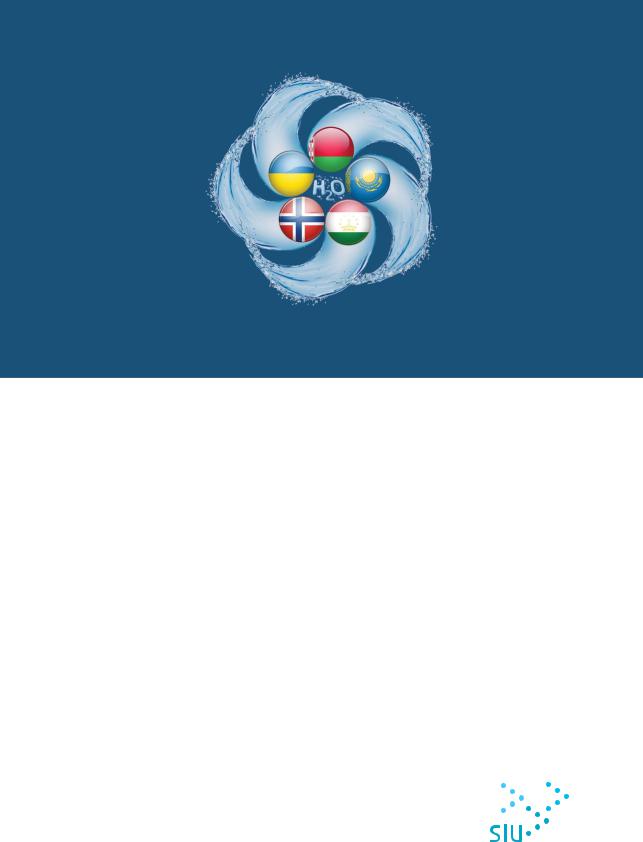
Water Harmony
PROJECT
2011-2015 |
|
www.waterh.net |
www.siu.no |
ABOUT Water Harmony
The Water Harmony project intends to establish a scientific and pedagogic consortium including eight partner universities from Ukraine, Belarus, Tajikistan, Kazakhstan and Norway to harmonize water related higher education by increasing the relevance and quality.
Water Harmony has been implemented in 2011-2015, involving nine coordinators from participating universities and 28 teaching and research staff members.
Project
HIGHLIGHTS
The Water Harmony project brought together leading water scientists from seven universities in Ukraine, Belarus, Kazakhstan and Tajikistan to join forces with the Norwegian University of Life Sciences to harmonize water related higher education and research.
Water Harmony has built a strong and sustainable international network of leading educators from eight university partners with common features that integrate their ambitions and competency. The Project has become a platform and institutionalized culture of knowledge and experience sharing, demonstrating a wisdom of global knowledge succession.
In frame of Water Harmony three harmonized educational modules covering water resources management, drinking water treatment and wastewater treatment have been developed, together with novel teaching tools and materials.
A comprehensive textbook was jointly developed and published in five languages including country specific information and practices. Lecture materials, lab courses, e-learning resources, laband teaching infrastructure were strengthened. Ambitious project targets were met via
21 joint project meetings distributed over 78 days at eight universities, involving 58 teachers.
The project provided 75 short-term and 15 medium term student fellowships, wherein students have experienced international research and educational environment that prepared them to a well-grounded choice of their future.
The interuniversity staff were involved in 29 MSc theses, 21 PhD theses, scientific committees of 13 international conferences and editorial boards of two international publications. The research work of students and staff were published in over 80 conference proceedings and publications and over 30 selected publications are published as proceedings of the Water Harmony project.
A motivated consortia, established in Water Harmony, looks beyond and sets new goals in a successful Erasmus+ project with 1.3 million Euro and new international partners.
Water Harmony was funded through the SIU EURASIA program.
2 |
Water Harmony Project |
www.waterh.net |
3 |

Coordinator Message
THE WATER HARMONY HAS
BUILT A TEAM OF WATER
EDUCATORS READY TO
FURTHER EFFORTS
Harmonized graduate education in water related specialties is a vision to cope with the increasing challenges requiring specialists that meet ever rising levels of quality and capacities. The first phase of the Water Harmony initiative, which this publication summarizes, is the foundation stone for a focused and sustainable start to a journey where all stakeholders will benefit.
The Water Harmony initiative has been successfully brought to life by an international team of eight universities from Ukraine, Belarus, Kazakhstan, Tajikistan and Norway. After four years of joint activities and tireless efforts, we now have a united family of skilled water educators, ready to reach for new heights.
Water Harmony is a unique project that has strengthened scientific networks among Norwegian and Eurasian universities, and resulted in innovative research collaboration in the water domain.
It is our joint achievement that we have met goals of expansion and coordination related to the quality of scientific content of water-related master’s and doctoral studies, publications and conferences in all the collaborating countries.
Even more importantly, we built a professional network that reviewed and revitalized the curricula of each partner. Experiences were exchanged at project meetings in Norway, as well as in other countries. This is a solid background for bigger development steps.
The best outcome of the work done are our students, who received an opportunity to be involved in international study courses, try textbooks with innovative approaches, experience modern laboratory practicums and carry out their advanced water research activities with stays abroad or in collaboration between universities. Besides the numbers discussed further on, one of the best illustrations of the project success is that the participating students were the winners of scientific competitions at different levels in their own countries 11 times.
Results discussed in this publication convincingly highlights that the team we have built has a future, which gives a further bright hope for the future of the water industry. We invite you to join us and share our experience in building a more societaland labor-market oriented graduate education.
Prof. Harsha Ratnaweera
Water Harmony Coordinator, NMBU, Norway
Partners
Norwegian University of Life Sciences NMBU
– 3 |
– 7 (32 days) |
|
|
|
|
|
|
|
|
|
|
||
|
|
|
|
|
||
|
|
|
|
|
||
|
|
|
|
|
||
|
|
|
|
|
|
|
Ukrainian State University of Chemical Technology USUCT
– 7 |
– 24 |
– 4 (12 days) |
|
|
National Technical University of Ukraine “Kyiv Polytechnic Institute” KPI
– 7 |
– 25 |
– 3 (7 days) |
Cherkasy State Technological University CHDTU |
||
– 4 |
– 9 |
– 1 (4 days) |
National University of Water Management and Nature Resources Use NUWM
– 3 |
– 6 |
– 1 (4 days) |
|
|
Belarussian State Technological University BSTU |
|
|
||
|
|
|||
– 4 |
– 8 |
– 2 (7 days) |
|
|
|
|
|||
|
|
|||
Mining-metallurgical Institute of Tajikistan MMIT |
|
|
||
– 3 |
– 6 |
– 1 (5 days) |
|
|
|
|
|||
|
|
|||
|
|
|||
South Kazakhstan State University SKSU |
|
|
||
– 4 |
– 6 |
– 1 (4 days) |
|
|
|
|
|||
TEACHING |
STUDENT |
MEETINGS |
|
|
PARTICIPANTS PARTICIPANTS |
|
|
||
4 |
Water Harmony Project |
www.waterh.net |
5 |

Joint Effort for a Mutual Goal
WATER HARMONY IS AN EDU-
CATIONAL PROJECT WITH MAIN
PURPOSE TO ACCUMULATE
KNOWLEDGE AND INTEGRATE IT
INTO EDUCATIONAL ENVIRON-
MENT OF THE PARTICIPATING
COUNTRIES
Water Harmony emerged as a perfect framework for cooperation of eight universities in five countries, concentrating on topical issues of water resource management in sustainable development context as well as on practical water and wastewater problems.
Water Harmony is an educational project with a main purpose to accumulate knowledge and integrate it into the educational environment of the participating countries.
One of the most important sustainable results of the project is a comprehensive textbook, which contains a state-of-the-art presentation of important aspects of water management and treatment. It is the product of work of a large number of experts in the field of water treatment and water management, but it is not the only result of the project. Equally important is the establishment of an international network, bringing together more than 30 like-minded researches, whose teaching and public activities are related to water issues.
This project held a number of successful and fruitful joint activities: academic seminars and international scientific and technical conferences; partners agreed and implemented three training modules on water issues to the educational process of all the participating universities; trained students; organized laboratories for water and wastewater treatment and much more.
However, the potential of the established professional network has increased considerably and now allows setting goals that are even more ambitious. Without a doubt, new research and educational projects of this team are coming soon.
Prof. Mikhail Burmistr
Rector of Ukrainian State University of Chemical Technology in 1998-2013, Ukraine
Activities and results
The Water Harmony project delivered three modules of seven subjects and nine sections to the curricula of partner universities, including two lab courses supported by equipment of laboratories of 11 types of teaching technical units.
To support continuous education, the international project team has created e-learning courses and provided studying resources based on the textbook material. As a result, the e-learning platform based on Moodle has been made available to all partners with free use for an indefinite time.
Experts of the project provided translation of the national education quality assurance systems, reviewed, compared and included improvement recommendations to the project trainings. Evaluation reports using QuestBack have been produced, distributed and reviewed. Quality of MS & PhD studies was enhanced via workshops, research stays and discussions.
Publications in frame of Water Harmony include a text book of 600 pages in five languages, 10 teaching methodological manuals and three teaching manuals. All teaching materials are produced, distributed and used in all languages. Over 1300 textbook copies are produced and being distributed to the partners.
The publishing outcome includes 286 publications (abstracts of conferences, publications and newspapers), 23 patents produced by teachers involved in the project and 86 research publications.
75 students received exposure to the Norwegian education system through to December 2014 and six more in 2015, all whom have participated in evaluation of the learning materials. Participating students successfully provided six MSc research theses at their respective home universities, three PhD students continued research at NMBU where 16 research projects were carried out in total, and five students are continuing their studies at NMBU.
6 |
Water Harmony Project |
www.waterh.net |
7 |
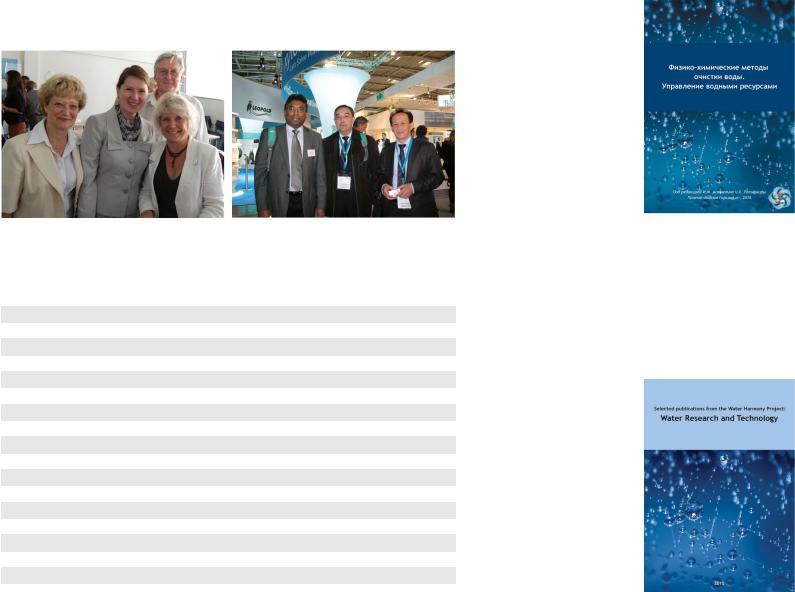
In addition to student-oriented activities, Water Harmony has carried out professional extension courses for teachers. Teacher training on the three modules carried out via sessions during project meetings and 20 teachers became certified in professional development on project basis. Participating teachers were also involved in interuniversity MSc and PhD defenses. The project also provided 25 excursions to water sites for students and teachers.
Project participants took an active position in different side activities: 13 participants took part in organization boards of international conferences and editorial committees in two journals.
In summary Water Harmony project have held 21 project meetings in 5 countries. These meetings were spread out over 76 days and participated by 58 staff members. The Water Harmony consortia members participated in six meetings with other Eurasia projects, to share the experiences.
25-26.05. 2011 |
Ukraine, Kiev, KPI |
8 participants |
27-29.10. 2011 |
Ukraine, Dnipropetrovsk, USUCT |
8 participants |
04-07.12. 2011 |
Ukraine, Dnipropetrovsk, USUCT |
29 participants |
23-26.01. 2012 |
Norway, Ås, UMB |
27 participants |
14-17.03. 2012 |
Ukraine, Rivne, NWUM |
13 participants |
04-07.07. 2012 |
Norway, Ås, NMBU |
25 participants |
10-14.10. 2012 |
Tajikistan, Khujand, MMIT |
13 participants |
21-23.11. 2012 |
Belarus, Minsk, BSTU |
14 participants |
19-25.05. 2013 |
Ukraine, Kiev, KPI and Cherkasy, CHDTU |
25 participants |
4.07-8.07. 2013 |
Norway, Ås, NMBU |
17 participants |
28.9-01.10. 2013 |
Kazakhstan, Shymkent , SKSU |
21 participants |
27-31.01. 2014 |
Norway, Ås, NMBU |
9 participants |
21-24.03. 2014 |
Belarus, Minsk, BSTU |
20 participants |
15-16.04. 2014 |
Ukraine, Kiev |
12 participants |
06-11.05. 2014 |
Norway, Ås, NMBU |
21 participants |
22-23.09. 2014 |
Ukraine, Kiev KPI |
7 participants |
19-21.12. 2014 |
Ukraine, Dnipropetrovsk, USUCT |
17 participants |
19-26.03. 2015 |
Norway, Ås, NMBU |
21 participants |
Publications
Physico-chemical methods of water treatment.
Water resources management
Edited by I.M. Astrelin and H. Ratnaweera 2015, 630 pages
In Russian: ISBN 978-82-999978-0-5
In Ukrainian: ISBN 978-82-999978-3-6
In Belarussian: ISBN 978-82-999978-5-0
In Kazakh: ISBN 978-82-999978-4-3
In Tajik: ISBN 978-82-999978-2-9
Textbook contains theoretical and practical information, national, regional and international scientific and statistical data. It is addressed to students and postgraduates as well as to practicing water and wastewater professionals.
Textbook consists of six chapters: Water in biosphere and human life, Basis of water resources management, Processes and apparatuses of water and wastewater treatment, Typical methods of water treatment, New trends and developments in water and wastewater treatment, Observation, control, modelling and optimization of water and wastewater treatment processes.
Selected publications from the Water Harmony
Project: Water Research and Technology
2015, 323 pages
ISBN 978-82-999978-1-2
Book of proceedings contains research publications of the Water Harmony partners. It includes 42 research papers on fundamental and practical aspects of water and wastewater treatment such as ozonation, aerobic digestion, coagulation, reverse osmosis, ion exchange, characterization of water quality.
8 |
Water Harmony Project |
www.waterh.net |
9 |
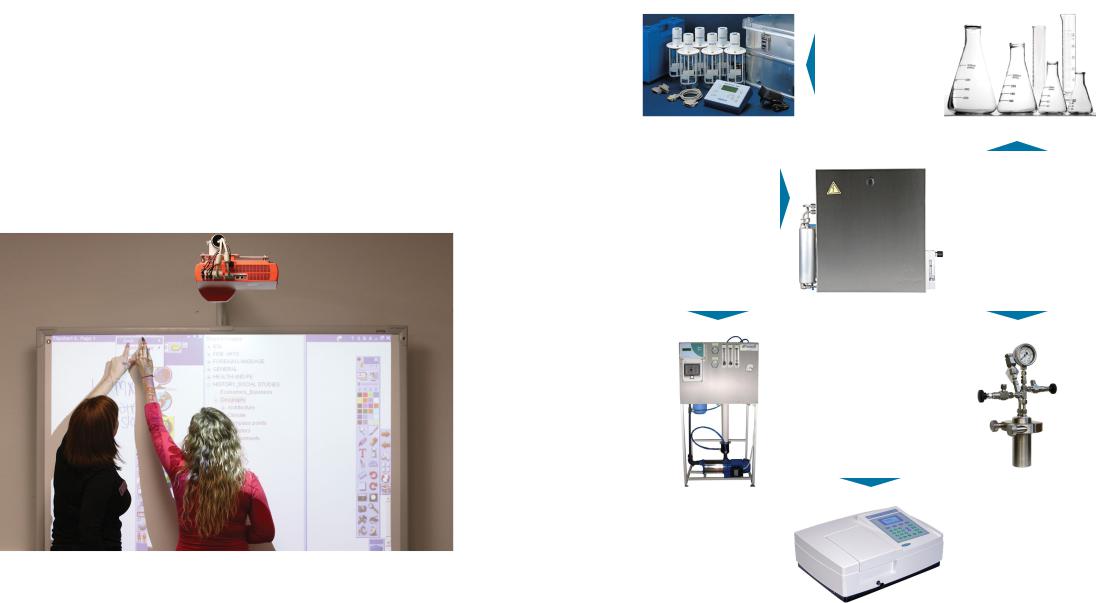
University Hardware Upgrade
Equipment obtained through the Project is used by partner universities for lecturing (active boards and projectors). Computers are used to perform calculations and designs for Master’s research, video conferencing and were used for writing Project text book chapters.
Server computers are used as a server for the University e-learning system http://NMBU-elearn- ing.no as well as to order and execute diplomas and diploma supplements based on European standard and to control of the educational process.
For example, the server installed at the Chair of Heat-, Gas Supply, Ventilation, and Sanitary Engineering of NUWM serves the distance learning system Moodle, workflow system AlFresko, special packages installed applications for the calculation of water and wastewater systems (Autodesk Map, Autodesk Civil 3D, Autodesk Revit , Grass GIS, Cartaro), contains information on the project “Water harmony” with links to the official website of the project. They have been used during the practical and laboratory studies of the water areas to aid the training of students at conferences and exams, as well as for distance education students.
http://www.prweb.com/releases/interactive/whiteboard/prweb489876.htm
Supplied Laboratory Equipment
Flocculator 2000
|
Laboratory glassware |
OZONE Scandinavia |
|
|
Laboratory hardware: |
Reverse osmosis systems: |
air compressors |
peristaltic pumps |
|
Ecosoft MO |
high pressure reactor |
Spectrophotometer
UV-5800PC
10 |
Water Harmony Project |
www.waterh.net |
11 |
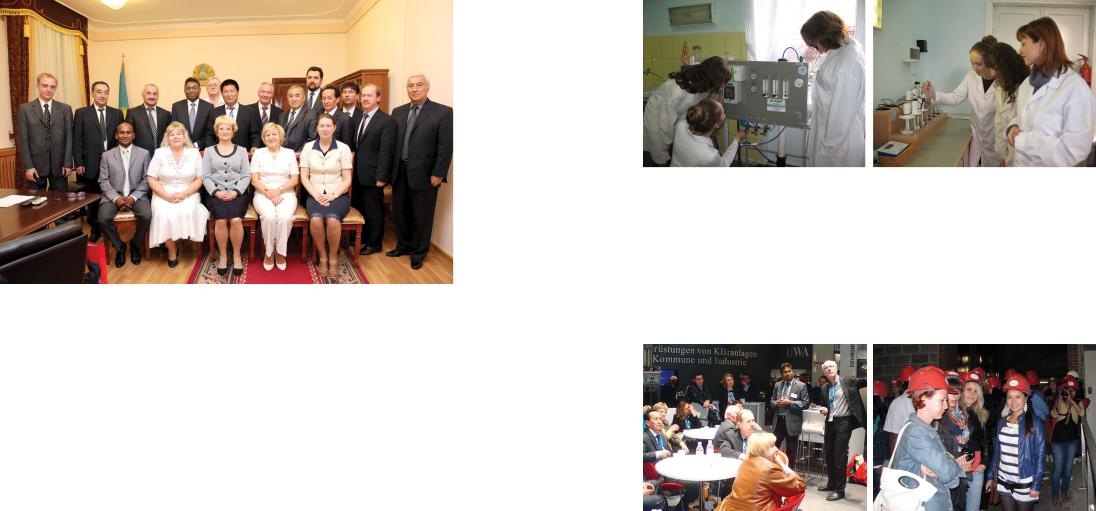
Project Impacts
The most significant impacts of the project are the establishment of a dedicated and sustainable international network of water scientists and teachers, and the large number of MSc-graduates who have become ambassadors of the value of joint teaching and learning efforts. Furthermore, the Water Harmony outputs made sustainable impact on teaching concepts, processes and tools among the partner universities. While the partners increased their appreciation of sharing knowledge and resources, the Water Harmony network and experience have also given results in the form of establishing new joint projects with EU funds within a very competitive environment. Partners have identified the benefit of (a) sharing the experiences with a wider user group, (b) development of capacities for innovation and entrepreneurship and (c) strengthening partnerships with public and private entities to produce graduates addressing needs of future employers, and identify the three points as valuable recommendations for next steps with a high cost-benefit and cost-impact values.
Participation in the Project increased the number of Master’s theses related to the study of technologies and application of coagulants at our university. Moreover, master graduates, who took part in the project, received job offers from the Production Company SVC, which develops and implements new coagulants. We have opened a new specialty at the university “Environmental chemical technologies” and included developed disciplines to the curricula of three specializations. Thanks to the e-learning platform http://NMBU-elearning.no provided by the project we now have a basis for development of a distance learning system.
Prof. Mikhail Burmistr
USUCT, Ukraine
The Project influenced the direction of research at our university. Now a majority of masters perform their qualification works in connection with water problems: ensuring quality of drinking water; control of water parameters; wastewater treatment concerning toxic substances; synthesis of new materials for water treatment etc. Development of new distance study courses allowed students to learn about the teaching experience on water issues in other universities. We deve loped new laboratory courses involving the equipment obtained through the project.
Prof. Ihor Astrelin, Dean
KPI, Ukraine
We increased the number of water related theses submitted by Bachelor and Master students based on the Project information support. Our researchers now focus on water problems of the region and we provide much better analysis of water management issues. Project results became a baseline for the Strategy of Regional Development 2020 in the domain of water and wastewater treatment.
Prof. Hennadiy Stolyarenko, Head of Department
CHDTU, Ukraine
12 |
Water Harmony Project |
www.waterh.net |
13 |
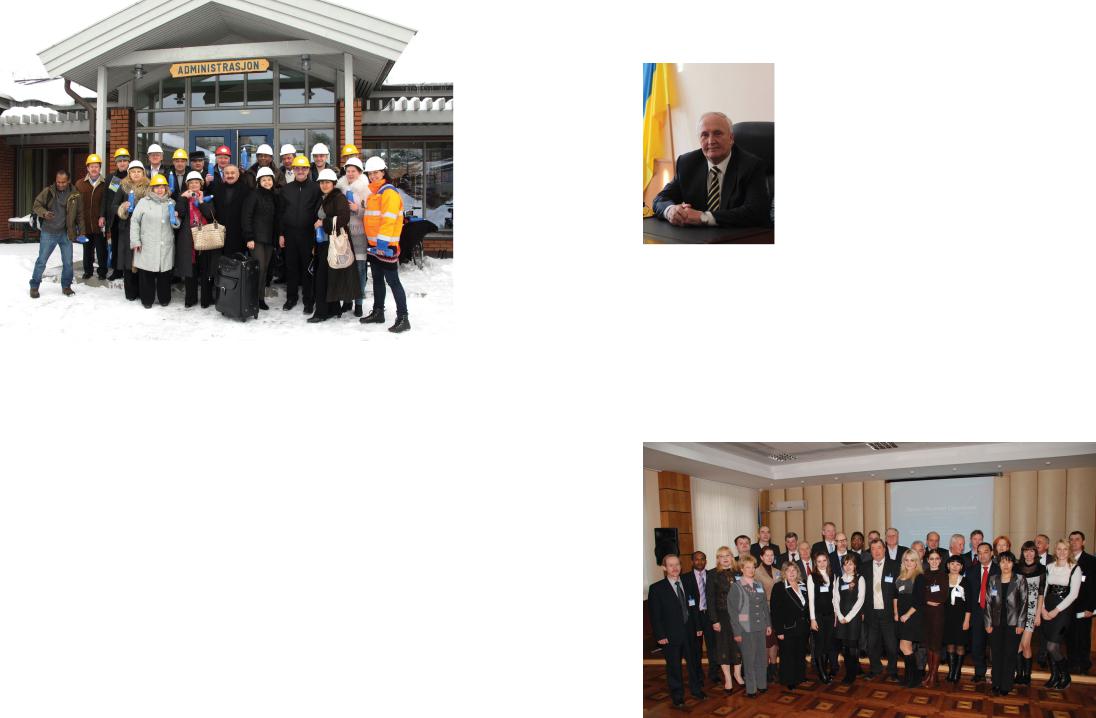
Our university applied the gained experience, particularly practices of the Norwegian University of Life Sciences, to the organization of the educational process of the second stage of higher education (MSc) in parts relating to research work. Now we see that every year at least 2 Master theses are dedicated to subjects related with wastewater treatment.
Prof. Oleg Dormeshkin, Vice-Rector
BSTU, Belarus
As a Project partner we involved students to water research and can demonstrate high-level research works: “Investigation of a transboundary pollution with heavy metals in the Syr Darya River”, “Wastewater treatment from a manufacture of sodium tripolyphosphate using different coagulants”, “Investigation of artesian water in the region Beth Pak Dala on heavy metals and transuranic elements”. These works became possible thanks to the laboratory equipment obtained through the project.
Prof. Malik Zhekeyev, Head of Department
SKSU, Kazakhstan
Thanks to the Project, we have opened a new specialty at the institute “Environmental Monitoring” as well as considerably increased the number of enterprises where students practicing in areas of environmental engineering, chemical engineering and ecology.
Prof. Rustam Azizov, Vice President, Academy of Sciences of Tajikistan, Former Rector
MMIT, Tajikistan
Prospects
The best demonstration of the Water Harmony success is the well-built consolidated international network of enthusiastic educators. The team that understands and wishes to learn more and to share more in order to gain benefits from achieving the common goals. Finally, the team opens to the best teaching and learning practices of the world-acknowledged universities. This team is certainly ready for the further development and continuing efforts.
The vital task of all partners consists in change of orientation from the traditional academic vector to the focus on social demands and meeting labor market needs. This requires transition of curricula under institutionalization of a new tradition to involve
both public and private sectors in the educational process. The modern approach to education also requires stronger orientation to innovation, entrepreneurship and internationally acknow ledged research.
The Water Harmony team points a new ambitious goal and sets forward to achieving it through the next phase of the project.
Prof. Oleksandr Pivovarov
Ukrainian State University of Chemical Technology, Ukraine
14 |
Water Harmony Project |
www.waterh.net |
15 |

Outcome Details
Educational modules on topical issues of water and wastewater treatment, and water resources management:
1 |
Physicochemical basis of water treatment methods |
5-10 ECTS |
2 |
Wastewater treatment |
5-10 ECTS |
3 |
Water resources management |
5-10 ECTS |
Included to the curricula as: |
|
- Disciplines |
7 |
- Sections |
9 |
Teaching materials to support developed courses: |
|
Learner's guides |
22 items |
Tutorials |
3 items |
Textbook |
1 item |
Available on-line through Moodle system |
8 courses |
International student mobility with stays at the Norwegian University of Life Sciences:
Participants of 2-3 weeks summer courses |
68 students |
|
Long-term studies during 2-12 months |
13 students |
|
Research stays for 6-24 months |
3 postgraduates |
|
Student activities: |
|
|
Reports on scientific research of MS and PhD students |
16 |
|
Master's and doctoral works of the partner countries in which the pro- |
9 theses |
|
ject participants acted as opponents and referees |
13 reviews |
|
Degree works on water problems defended by students participating in |
29 |
|
the project at home universities |
||
|
||
Doctoral theses defended at participating universities |
5 |
|
Training and educational tours for students and teachers |
25 |
|
Professional development for teachers: |
|
|
Lections for teachers |
8 |
|
Teachers visited Norway and other countries |
58 |
|
Certificates issued on 108 academic hours prof. extension program |
20 |
Project publications and organization of conferences: |
|
|
Articles in scientific and technical journals and abstracts at |
286 |
|
conferences and seminars |
||
|
||
including publications with students |
86 |
|
Patents |
23 |
|
Conferences where partners participated in Organizing Committee |
13 |
|
Editing in editorial boards of scientific journals published by partners |
2 |
|
Publications in various print resources with reference to the project |
35 |
|
Supplied equipment: |
|
|
Equipment for laboratory practicums on chemical water treatment |
28 |
|
Interactive whiteboards Panaboard UB-T580-G |
2 |
|
Projectors and screens |
7 |
|
HP server |
1 |
|
PCs, laptops and tablets |
22 |
|
Printers, web-cameras, headsets |
8 |
Gender distribution of students participating in educational courses through the Water Harmony Project:
University |
|
Number of students |
|
|
Total |
Female |
% |
||
|
||||
USUCE |
24 |
20 |
83,3 |
|
SKSU |
6 |
2 |
33,3 |
|
NTUU KPI |
25 |
22 |
88,0 |
|
CHDTU |
9 |
4 |
44,4 |
|
MMIT |
6 |
2 |
33,3 |
|
BSTU |
8 |
7 |
87,5 |
|
NUWM |
6 |
2 |
33,3 |
16 |
Water Harmony Project |
www.waterh.net |
17 |
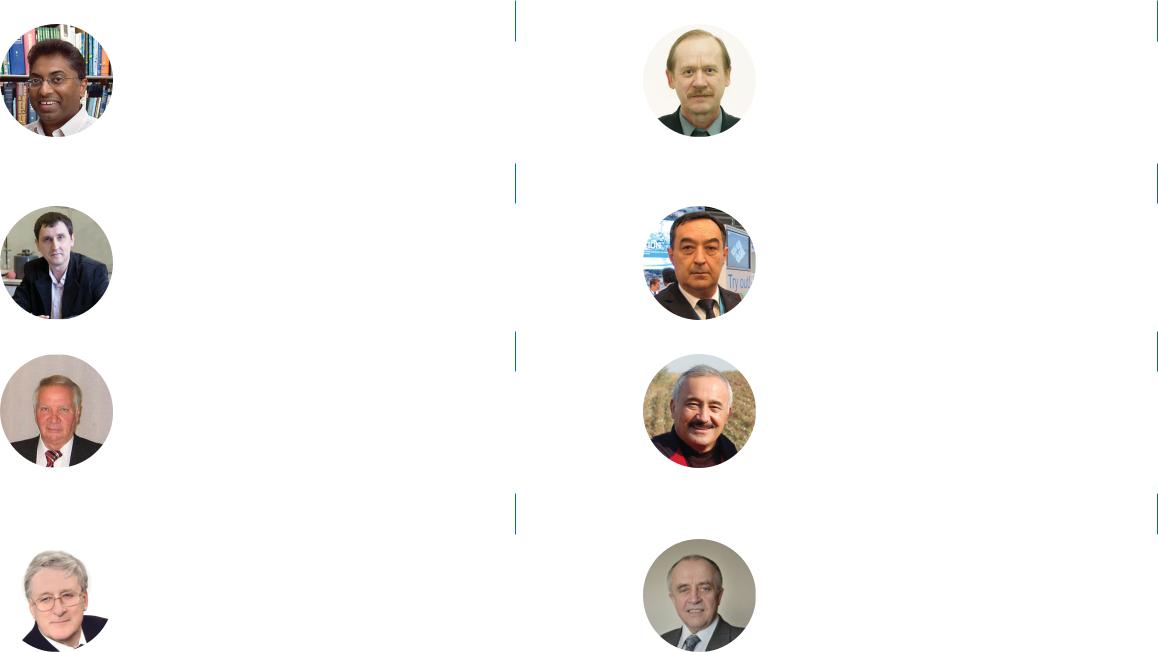
Partners and Participants
Norwegian University of Life Sciences |
|
Universitetstunet, 3, Aas, Norway, 1430 |
|
|
+47 67 23 00 00 |
|
|
www.nmbu.no |
Prof. Harsha Ratnaweera |
|
Prof. Oddvar Lindholm |
Project Coordinator |
|
Dr. Arve Heistad |
harsha.ratnaweera@nmbu.no |
|
Dr. Jarle Bjerkholt |
+47 98 22 7777 |
|
Lelum Manamperuma, MSc |
Ukrainian State University of Chemical |
Gagarina Ave., 8, Dnipropetrovsk, Ukraine, 49000 |
|
Technology |
|
+380 562 47 46 70 |
|
www.udhtu.com.ua |
|
|
|
|
Dr. Roman Smotraiev |
|
Prof. Oleksandr Pivovarov |
Project coordinator in cooperating |
|
Prof. Mykhailo Burmistr |
countries |
|
Dr. Olena Koltsova |
smotr00@gmail.com |
|
|
|
Dr. Natalia Makarchenko |
|
+380 98 430 3625 |
|
Dr. Olga Sverdlikovska |
|
|
|
National Technical University of Ukraine “KPI” |
Peremohy Ave., 37, Kiev, Ukraine, 3056 |
|
|
|
+380 44 236 7989 |
|
|
www.kpi.ua |
|
|
Dr. Olga Sanginova |
Prof. Ihor Astrelin |
|
Dr. Nataliia Tolstopalova |
i.m.astrelin@xtf.kpi.ua |
|
Dr. Iryna Kosogina |
|
|
Dr. Tetiana Duda |
|
|
Tetiana Obushenko, MSc |
Cherkassy State Technological University |
Shevchenka Blvd., 460, Cherkasy, Ukraine, 18000 |
|
|
|
+380 472 710 092 |
|
|
www.chdtu.edu.ua |
|
|
Dr. Andrey Gromiko |
Prof. Hennadiy Stolyarenko |
|
Dr. Tetiana Solodovnic |
ozon_gs@rambler.ru |
|
Natalia Fomina, MSc |
Belarusian State Technological University |
Svyardlova str., 13А, Minsk, Belarus, 220006 |
|
+375 17 226 14 32 |
|
www.belstu.by |
Dr. Vladimir Martcul |
Prof. Oleg Dormeshkin |
Prof. Lydmila Ehshenko |
|
martcul@tut.by |
Dr. Victor Leontiev |
South-Kazakhstan State University |
Tauke Khan Ave, 5, Shymkent, Kazakhstan, 160012+7 8 |
|
725 2 53 50 48 |
|
www.ukgu.kz |
|
Prof. Abibulla Anarbaev |
|
Prof. Malik Zhekeev |
Dr. Almagul Kadirbaeva |
|
Dr. Laura Aikozova |
||
malikzhekeyev@mail.ru |
||
|
Mining-Metallurgical Institute |
Moscow str., 6, Chkalov, Tajikistan, 735730 |
|
+99247 448 96 28 |
|
Prof. Rustam Azizov |
Prof. Zafar Razykov |
Prof. Muzaffver Yunusov |
zafarrazykov@mail.ru |
Dr. Tohpulot Djurabaev |
|
Dr. Bahtior Saidov |
National University of Water Management |
Soborna str., 11, Rivne, Ukraine, 33028 |
|
and Natural Resources Use |
+380 362 63 30 98 |
|
www.nuwm.edu.ua |
||
|
||
|
Dr. Ievgenii Gerasimov |
|
Prof. Mykola Hirol |
Dr. Andriy Hirol |
|
m.m.hirol@nuwm.edu.ua |
Dr. Olga Novytska |
18 |
Water Harmony Project |
www.waterh.net |
19 |
